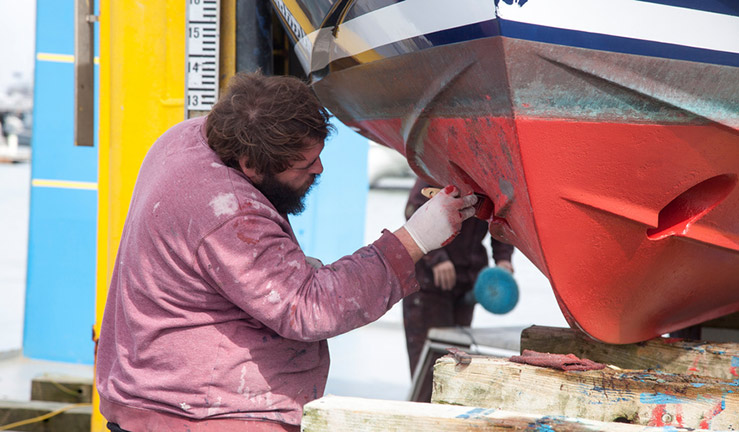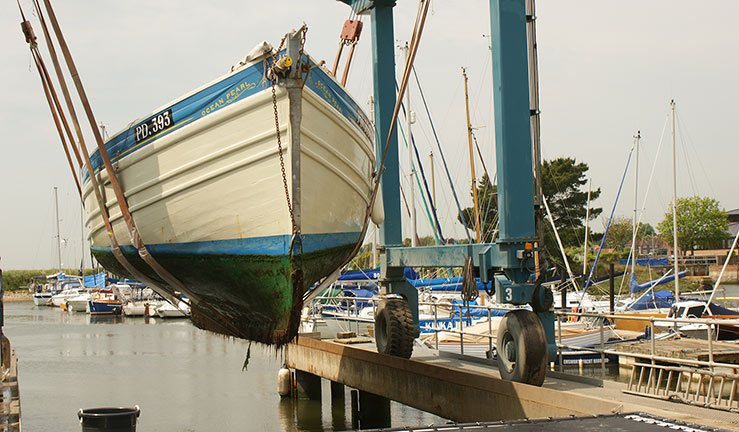Antifouling
What is antifouling and how can you reduce its environmental impact?
What is antifouling?
Antifouling is the process of applying protective paint to the bottom of a boat. Unlike regular paint, antifoul paint is specifically designed to protect the hull from marine growth. This not only keeps the hull clean but improves fuel efficiency and helps prevent the spread of non-native species.
There are many different types of antifoul paints that traditionally use biocides, ingredients like zinc and copper, to prevent barnacles, slime, and weeds from attaching to a vessel. However, when these metals make their way into delicate ecosystems through leaching or when applied and removed from boats, they can be highly toxic.

Protect, Collect and Dispose
When chipped antifoul paint enters the water, surrounding marine life can mistakenly ingest it, resulting in a negative impact on the food chain. By following the antifouling best practice method, Protect, Collect and Dispose, you can significantly reduce its impact on the environment.
Protect: If ready to apply your chosen antifoul paint, lay down a tarpaulin or groundsheet before starting. This will protect the surface under the boat by catching any loose debris or scrapings. To protect yourself wear Personal Protective Equipment (PPE) and work in a well-ventilated area.
Collect: Tarpaulin should make it easier to collect large remnants. However, using an industrial vacuum-cleaner linked to the paint scraper will help minimise the amount of loose paint flakes and dust. Any water used when pressure washing your boat should also be collected. You can do this by using a portable bunding or filtered washdown facility at a marina, boatyard, or harbour.
Dispose: Finally, you must efficiently dispose of antifouling waste. Ensure all hazardous waste such as paint pots, disposable gloves and paint scrapings are disposed of in hazardous waste bins.

Additional best practice advice includes:
Boat owners play a vital role in preventing concentrated scrapings from entering the water and polluting it. This can be further reduced by following additional best practice methods:
- Use a dustless vacuum sander to protect your health, as the dust from sanding paint and antifouling coatings is toxic.
- If washing your hull on a slipway, place a length of rope across the slope. This will catch larger paint particles, which can then be disposed of in a hazardous waste bin.
- If you use scrubbing piles, only scrub off the fouling and not the underlying paint. Be careful not to let old or new paint enter the water.
- Take advice from your chandlery on the correct type of antifoul for your location and use. Preferably, choose one with the lowest levels of biocides and copper. Use water-based paints where possible, or low VOC (Volatile Organic Compounds).
- Use less damaging bottom paints, such as vinyl, silicone, Teflon or ultrasonic technologies.
- Dispose of any used brushes, rollers, trays, and empty cans of antifoul as hazardous waste.
- Antifouling products are regulated by the Health and Safety Executive (HSE) and it is the duty of the user to comply with the conditions of use printed on the product’s label.

We strongly recommend boaters move away from biocidal coatings, to reduce pollutant deposits on land and in the waters around our marinas, clubs, and centres.
For more information on antifouling best practices or for further tips on sustainable boating, visit The Green Blue.
